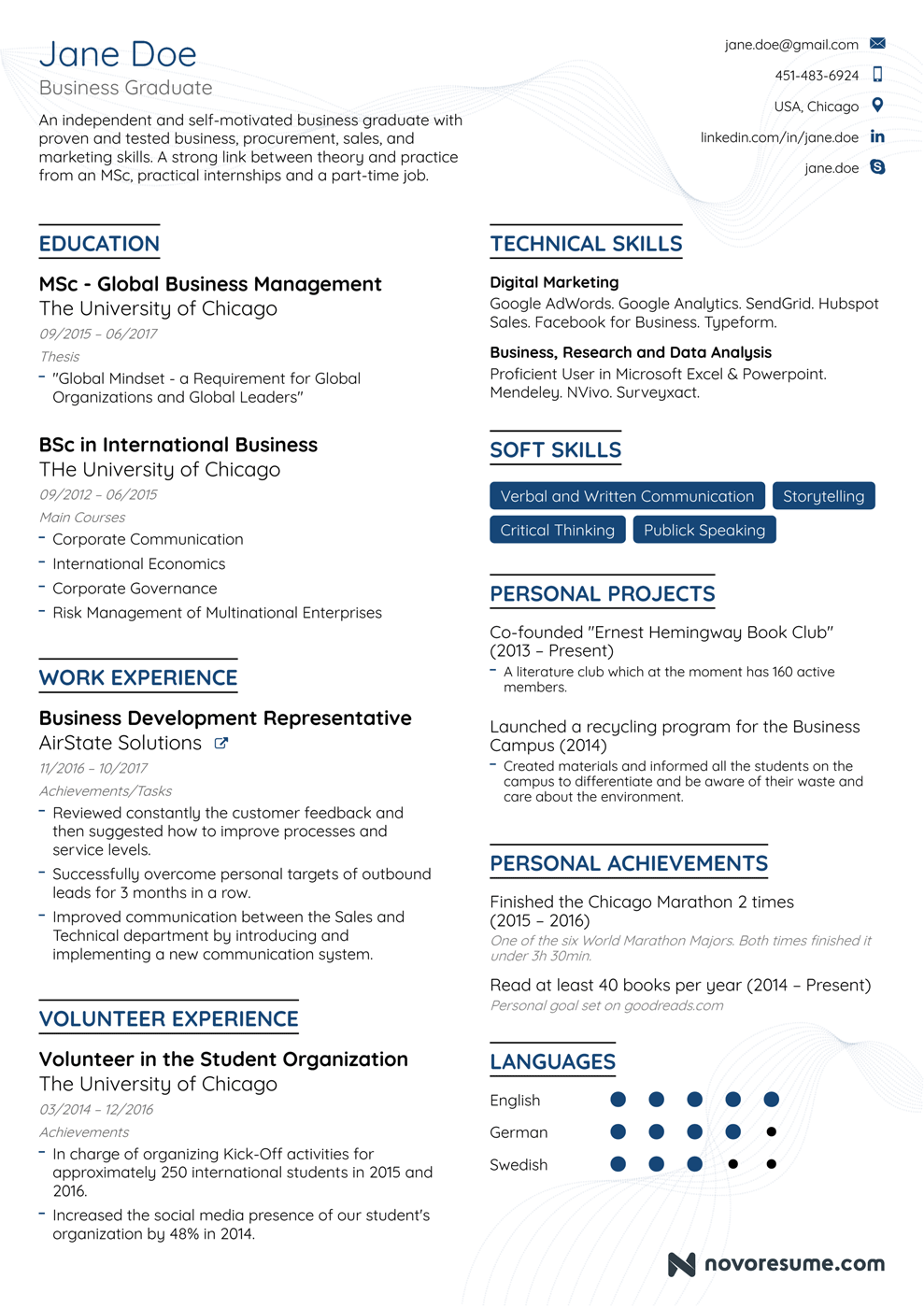How to Write a Resume [According to Recruiters]
For as long as anyone can remember, the resume has been a fixture of the professional landscape — and all along, we’ve been arguing about what, exactly, your resume is supposed to look like.
Those arguments have only grown noisier in the digital age. Not only do more people have platforms to enter the conversation, but we’re also in the process of trying to figure out where social media profiles fit into the recruiting and hiring picture. Do we use them the same way we use resumes?
Will they soon eclipse resume? Should some information go on social media and other information go on your resume?
The answers to these questions will depend almost entirely on who you ask.
So everyone and their mother has an opinion on resumes these days. It can be overwhelming — but the good news is, you really don’t have to listen to any of them. All that matters is what recruiters and hiring managers want from a resume. After all, they’re the target audience. Who cares what your sister’s best friend’s cousin’s career coach said? They can’t offer you a job.
And what do recruiters and hiring managers want from your resume? Again, there’s some variation depending on the preferences of specific recruiters and employers, but there are a few things we almost all unanimously agree on at this point. Here are the eight dos and don’ts of writing a great modern resume:
1. Don’t Include an Objective
These things were in vogue a decade or two ago, but today’s recruiters and hiring managers are almost unanimously opposed to them. They argue that your objective doesn’t need an explanation — clearly, you want a job.
2. Do Include a ‘Key Skills’ Section
Once you’ve cut the objective, you can fill in the blank space with a “key skills” section that outlines 10 or so skills you have that are relevant to the job at hand. The “key skills” section allows you to make your skill set clear and obvious, which is better than depending on recruiters and hiring managers to infer your skills from the accomplishments listed under each role.
The “key skills” section also makes it easier to tailor your resume for each role. Consider maintaining a master list of 20 skills you possess. For each job to which you apply, you can pull skills from this master list depending on which is most relevant to the specific role and employer.
3. Don’t Include Generic or Irrelevant Skills
The “key skills” section is only useful if it gives recruiters and hiring managers valuable information about you as a candidate that they might not otherwise have. Generic or vague skills like “good communicator” and “problem-solving” don’t tell the employer anything about you. In fact, listing such skills may hurt your candidacy: Recruiters and hiring managers may very well read your list, roll their eyes, and toss your resume in the trash.
Also, make sure the skills you list are relevant to the role at hand. You may be an expert in JavaScript, but if you’re applying for a sales role, that detail probably won’t be too helpful. (Unless, of course, the sales role involves JavaScript.)
4. Do Include Keywords From the Job Post
There’s a very good chance any resume you send out will have to make it through an applicant tracking system (ATS) before it ever lands in front of a recruiter or hiring manager. Unfortunately, ATSs aren’t very sophisticated, and they screen resume primarily according to keywords.
To maximize your chances of getting past the ATS, incorporate keywords from the job post itself. Did the job description emphasize any skills, technologies, or tasks in particular? Incorporate them into your resume. Obviously, the “key skills” section is an easy way to pepper in some keywords, but consider also framing your accomplishments in language that aligns closely with the job post.
5. Don’t Focus on Responsibilities
Some people will tell you not to mention your duties and responsibilities at all, but that’s a bit extreme. Most recruiters and hiring managers want at least a sense of what you did every day in your previous jobs.
However, your day-to-day responsibilities should not be the focus of your work history. Provide a brief overview of your duties, for each role, but spend the bulk of your bullet points on your quantified accomplishments and major projects. Recruiters and hiring managers want to know what you can achieve. They’re looking for value-creation, not someone who can keep the status quo running along.
7. Don’t Leave Gaps
Unemployment happens. Recruiters and hiring managers today are a lot more understanding of it — but only if you explain the gap. Unaddressed employment gaps will cause employers to wonder, and unfortunately, they’ll probably draw some not-so-favorable conclusions about you.
Instead of trying to sneak your employment gap by prospective employers, fill it with volunteer opportunities, consulting work, and other side projects that show organizations you stayed productive even when you were out of work. Someone who did great work in their community while unemployed looks a lot more impressive than the candidate who tries to pretend the gap doesn’t exist.
8. Do Keep It Brief
It’s a resume, not an autobiography. Don’t give employers you whole career history. List your most recent and most relevant jobs. Try not to include any work that happened more than 10 years ago unless it was some really amazing, career-defining project. Keep your resume to one page; two pages is okay, but only if absolutely necessary. Any more than two is almost never justified.
Following you can see a resume example for jobs that follows the above mentioned principles demanded by recruiters.

Recommended Reading:

